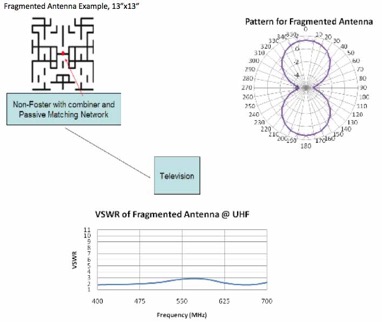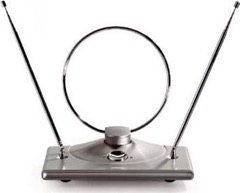NAB Sponsored State-of-the-Art Antenna Research for "Rabbit Ear" Replacement
30 09, 10 22:23

On August 17, NAB unveiled an impressive high tech report they had commissioned from a not well known, but very well qualified military contractor on a possible replacement for the ubiquitous “rabbit ears” used in houses that depend on over-the-air reception. It is commendable that in an effort to reverse the decline in over-the-air viewers NAB this time decided to pay for good engineering rather than the usual lawyers and lobbyists.

MegaWave Corp., of Devens, MA had done a study for NAB in 1995 on available antenna technology for improved set top performance and NAB’s FASTROAD (Flexible Advanced Services for Television & Radio On All Devices) program, a technology advocacy program, hired them again to survey new antenna technology and the opportunities resulting from decreased TV band spectrum. (MegaWave’s hometown is next to Ft. Devens, for many years a major Army Security Agency installation. So it can be surmised that they have dealt with “3 letter agencies” other than FCC.)
The report is fascinating for us techies, reviewing all sorts of interesting antenna technologies not well known outside of antenna researchers and the military industrial complex. The pictures at the top of this post shows one antenna they spent a lot of effort exploring and its performance.
The report points out than many advanced technologies depend on feedback from the DTV receiver on how well it is receiving the signal. In 2007 CEA developed a standard (CEA-909) for such signals from the DTV receivers to the antenna, but receivers with this interface are rare in the US market. In Europe, a comparable interface is more common. (One wonders if the recent spat between NAB and CEA over FM receivers in cell phones will make this type of interindustry cooperation any easier.)
The MegaWave report ends with these conclusions:
- There have been significant and potentially useful antenna design methods and actual hardware developed over the past 15 years that will improve the performance of low‐profile, compact indoor/set‐top DTV antennas.
- In the area of electro‐magnetic computational and design optimization methods Genetic Algorithms (GA) and the Central Force Optimizer (CFO) have proven themselves as powerful tools in the design of broadband, compact antennas.
- Using the above, we have included an example of an advanced antenna technology, specifically the Fragmented Antenna as part of this project. We submit that it would be nearly impossible for a human to replicate its design and performance.
- The Non‐Foster active broadband matching technology and its required semiconductors have matured to the point where they could be incorporated into a commercial indoor/set‐top design to provide a matched antenna where it is considered as being electrically small. In the example shown below it would be used to provide acceptable performance with the Fragmented dipole within the 54‐88 MHz band. Other element geometries are also possible.
- Many of the other advancements listed in Table 1‐1, specifically 2.4 through 2.6, require a CE‐909‐A type interface with the DTV receiver, and while potentially useful if and when manufacturers start adding this feature to their products they offer no practical improvement for the near term.
- The technologies designated as 2.7 through 2.10 while interesting are either too embryonic (2.7 & 2.8), too complicated and too large (2.10) or not well vetted (2.9) to be considered in the near term.
Congratulations to NAB for this technological tour de force.
Comments



![Validate my RSS feed [Valid RSS]](valid-rss-rogers.png)

